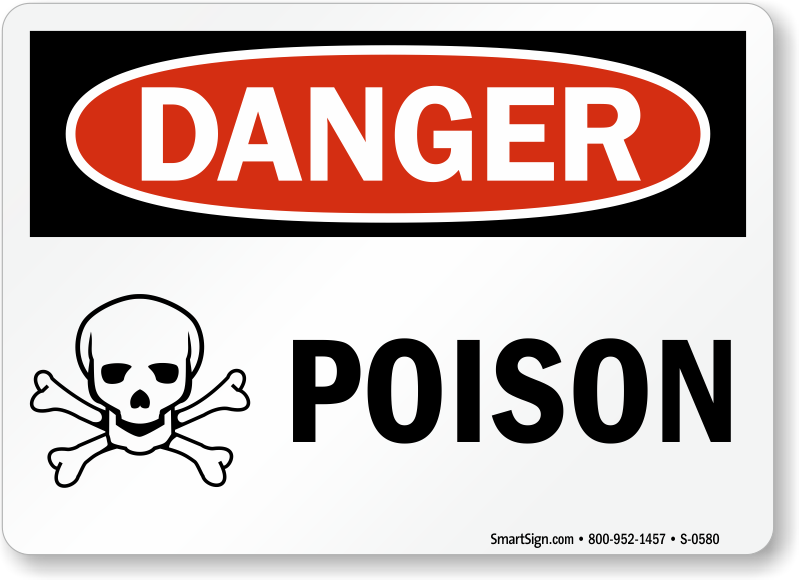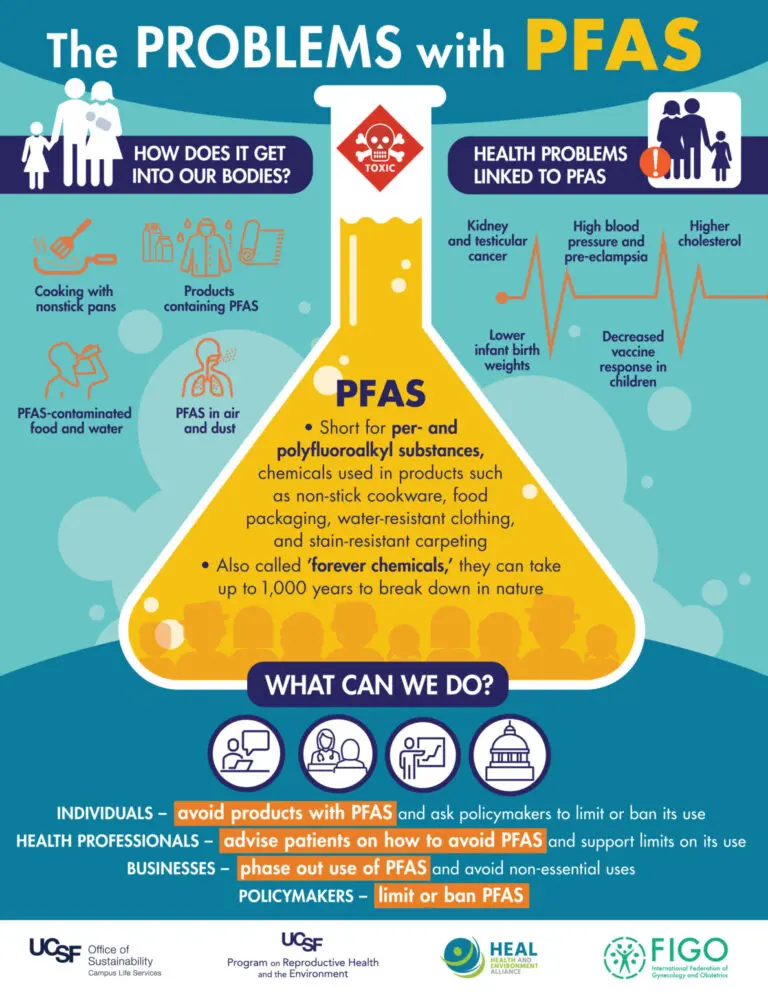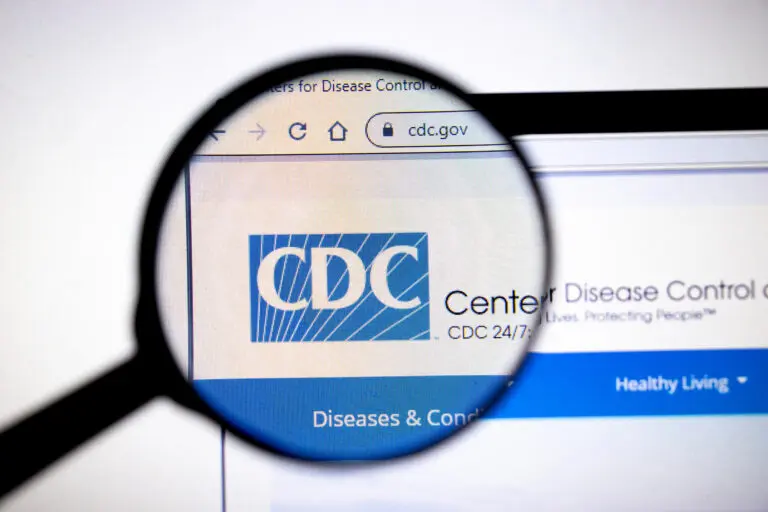Beware of Toxins in Drinking Water
As written by Brian Vaszily on 10/13/2020
How often do you think about your drinking water?
Probably not very often, since most Americans take it for granted that the water we have access to is clean.
In fact, unless you live somewhere like Flint, Michigan where there was a huge lead contamination crisis, it’s easy to assume that official organizations are doing their job of regulating water purity.
Unfortunately, that’s not the case. There is growing evidence of contaminants and toxic chemicals in drinking water that can cause long-term chronic health problems for you and your family.
So far, government regulatory agencies haven’t stepped in to solve the problem, so it’s up to you the consumer to be educated on what’s happening and make better choices for yourself.
Are You Really Drinking Clean Water?
You probably know a little bit about how important water is to our health. The human body can’t survive very long without it, and drinking enough water is essential for healthy skin, kidney function, brain health, and much more.
It’s a well-known “fact” that Americans are fortunate to have ready access to clean water, something people in less developed countries don’t have.
This is true on the surface. You have a very low chance of suffering acute symptoms or death caused by waterborne bacteria like E. coli. However, that doesn’t mean the water you’re drinking is completely safe.
Consistently drinking water that has low levels of contaminants can lead to an accumulation in your system, which causes chronic health problems (rather than acute). You might not even realize you’re getting sick or connect your symptoms to your water source.
Even worse, those at most risk for being affected by hidden toxins in drinking water are the already vulnerable: children, pregnant women, and those with weakened immune systems.
Toxins to Be Aware Of
The first step to cleaning up your drinking water is learning what may be lurking in it. Let’s take a look at the most common (and dangerous) chemicals you should know about.
Lead
Lead is probably one of the most well-known water toxins because it makes a big splash when there’s a problem. Contamination with lead comes from lead pipes and other plumbing fixtures that can leach into the water supply.
Water companies are supposed to test for lead, but they don’t always do so. You can’t see, smell, or taste lead, so you won’t notice its presence on your own.
Exposure to lead has a serious negative effect on the brain and central nervous system, although it can also affect every organ in the body. Children are at the most risk for toxicity because their brains are still developing.
Fluoridation / Fluoride
Fluoride is often marketed as a beneficial chemical that will help you have strong and healthy teeth. It’s a mineral naturally found in your teeth and actually a naturally occurring mineral in some of the cleanest water sources on earth, where it is not toxic. (In these pure waters, it often bonds with the naturally occurring calcium and becomes calcium fluoride.)
However, fluoride became a common additive to tap water in the 1940’s.
And while there may have been good intentions involved, this fluoridation process is an industrial waste byproduct from the manufacturing of aluminum or fertilizer.
And there’s growing concern that this type of fluoride accumulates in the bodies of those who consume it and acts as a neurotoxin and endocrine disruptor.
It’s currently under investigation by the National Toxicology Program of the U.S., but many other countries like France, Italy, Sweden, Japan, and Norway have already either banned or never used fluoridation because of health concerns.
Disturbingly, one study found that higher levels of fluoride in drinking water likely causes a drop of IQ in children who drink that water.
Chlorine
Chlorine has been used for many years to purify water of potential disease-causing microbes, so you would think it was known to be safe for consumption, but that isn’t the case.
The main danger of toxicity comes when chlorine reacts with certain organic compounds present either in drinking water or in your gut. The end result is that toxic byproducts like trihalomethanes (THMs) and haloacetic acids (HAAs) are produced.
Both of these chemical groups can increase your risk of certain cancers, adversely affect your kidneys, and cause reproductive problems.
Perchlorate
Perchlorate is a natural compound that can also be made synthetically in a lab. It’s known as an oxidizer and is commonly used in fireworks, explosives, road flares, and rocket propellants. It can also be found in certain fertilizers.
Naturally occurring perchlorate is not usually present in large enough amounts to cause any harm. However, the man-made version has leached into drinking water in several states.
The main toxic effect of perchlorate is on your thyroid gland. It can inhibit your thyroid from taking up iodine (an essential nutrient), leading to other health problems.
Like many other toxins, repeated consumption of perchlorate is most dangerous for children, pregnant women, and those with compromised health. It can lead to developmental and learning disabilities in children and is especially dangerous for kids under 2 years of age.
PFAS (aka “Forever Chemicals”)
The technical name for PFAS is per- and polyfluoroalkyl substances, which refers to a group of man-made chemicals that can have very adverse health effects.
PFOA and PFOS are two of the most studied PFAS. Both are persistent, which means they won’t break down, and can easily accumulate in the environment, water sources, animals, and humans (hence the name “forever chemicals”).
These chemicals are no longer manufactured in the U.S. because they were found to cause reproductive, developmental, liver, and kidney problems (to name a few) as well as cancer. However, the damage has already been done, and imported goods may still contain these PFAS.
A recent report by the Environmental Working Group (EWG) revealed that PFAS have contaminated tap water in many U.S. cities, much more so than was previously thought.
This is important because water companies don’t have to test for PFAS or report their results if they do.
Pesticide and Fertilizer Residue
You’ve probably heard about the dangers of residue from chemical pesticides and fertilizers in your food. Maybe you’ve even made some different choices for food sources because of it.
A more unrecognized aspect to the problem of using chemicals in farming is that the residue can also get into drinking water sources.
Nitrates are a common contaminant that enters into groundwater through runoff from farms that use certain fertilizers or have livestock manure. They are most likely to show up in well water and are very dangerous for infants under the age of 6.
Atrazine is one of the most common chemicals from pesticides found in drinking water. It seems to show up most often in Midwest and southern U.S. water sources and can cause hormone problems for women, especially low estrogen.
Water contaminated with atrazine also has a particularly negative effect on the fetus during pregnancy.
Radioactive Materials
What would you think about drinking radioactive water? It sounds like something from a sci-fi movie, but radioactive substances can leach into groundwater from nuclear power plants, coal mining operations, construction, and so on.
The danger mainly comes from unsafe operating practices, and the risk is highest if your water source is near operations that use radioactive materials. EWG statistics show that radium contamination in public water is more likely to happen in the eastern half of the U.S.
Radium is a known carcinogen, and high levels of it increase your risk for developing bone, liver, and breast cancer. Radium also decays into radon, which can cause lung cancer.
Other potentially dangerous radioactive substances that can get into water include uranium and thorium. They can also cause cancer and kidney damage.
Pharmaceuticals
Pharmaceuticals are often an overlooked toxin in drinking water.
Low levels circulate through public water from the flushing of prescription medications and trace amounts excreted in urine. Hospitals and other medical facilities also contribute a large amount when staff isn’t trained in proper disposal of unused or expired medicine.
This means you could be regularly consuming low or trace amounts of antibiotics, antidepressants, pain-killers, steroids, hormonal therapy drugs, and more.
The impact of pharmaceuticals in drinking water has not yet even been seriously studied, but reports are showing that this kind of contamination is happening in major metropolitan areas in the U.S.
Should I Switch to Bottled Water?
If there is so much potential for toxins to be hiding in tap water, isn’t bottled water the better choice?
Many bottled water companies would have you believe this to be the case. Quite a few of them market their product as spring water or some kind of extra pure version of water, but there are a few problems when switching to bottled water.
It’s All About Marketing
Bottled water and tap water actually have to follow the same guidelines for quality set by the FDA and EPA. That means if toxins are slipping through the cracks of current regulations for tap water, the same is happening for bottled water– and it can still be labeled as “pure”.
Because you don’t know the actual source of the water packaged in bottles, you have no idea how pure it really is and no way to do testing on the water source. It could, in fact, just be packaged tap water.
Even bottled water that is labeled as spring water or a similar source may have been chlorinated and processed before being bottled, taking a lot of the natural goodness away.
The bottom line? It’s all about marketing, not your health.
Added Dangers
Even if certain bottled water brands are better than tap water (and you have no way of knowing), the dangers of plastic leaching into food and drink products is becoming apparent.
Estrogen-like chemicals are the biggest problem. Their effect on human health is still unknown, but it’s safe to say that chemicals with a hormone-like effect are not something you want to be regularly consuming.
BPA, a compound that used to be in many plastics, was thought to be mostly responsible for leaching these dangerous chemicals. You’ll now often see plastic products labeled as BPA-free to indicate greater safety.
However, at least one study has now shown that even BPA-free plastic still leaches chemicals that have estrogen activity, some even more so than plastic that contains BPA.
Too Costly
Besides the fact that most bottled water is likely equal or worse to tap water, it’s also way more expensive.
Of course, you have to pay a water bill every month to get tap water, but it still works out to be much more cost-effective than going bottled. And the more “premium” your bottled water is, the more expensive it will be as well.
Money aside, there’s also a large cost to the environment associated with bottled water. Despite recycling programs, some estimates state that up to 91% of plastic bottles are never recycled and either go to landfills or get blown in water sources, including the ocean.
What Can You Do About Toxins in Drinking Water?
All this information about potential toxins in your drinking water can be discouraging, but there are several real steps you can take to work on the problem.
Find Out More
You can find out more about your specific water source by having testing done yourself rather than just believing that your water provider has done their job.
There is a cost associated with this, but it will help you determine your next steps. You can also use the EWG’s Tap Water Database to view data they’ve already collected on water in your local area.
Reverse Osmosis
A reverse osmosis water system is one of the best ways to remove contaminants from water. It works by forcing water through a semipermeable membrane and filters to naturally remove chlorine and other toxins.
It’s natural (no chlorination involved) and works better than many sink or pitcher filters you can buy in the store.
The main downsides are that installing a reverse osmosis system for your whole home can be expensive. It also removes healthy minerals, and you’re still starting with water that has likely been chlorinated rather than being naturally pure.
**The below section on Rising Springs Water is for reference only. The company ceased operations in March of 2021**
Tap Into a Really Pure Water Source
(and one I highly recommend)
Despite all the bad news about drinking water, natural and pure sources of water do still exist. They aren’t always easy to discover, but the good news is that you can actually get clean and unprocessed water delivered to your door.
The spring water from Rising Springs is one such source. In fact, it’s safe to say theirs is amongst the purest, healthiest waters available anywhere on earth!
Rising Springs’ water comes from a natural geothermal spring 2.2 MILES underground, from a source hidden away in the Sawtooth forest of Idaho. Granite has protected the water for centuries from contaminants, and it remains unprocessed and unfiltered.
Unlike reverse osmosis water, Rising Springs water is so full of minerals that it’s considered a natural mineral supplement. And it’s collected and packaged sustainably, unlike bottled water.
You won’t be able to switch all your daily water usage over to something like Rising Springs, but just a few cups a day is a big boost for your health and absolutely zero toxins are involved.
Head here to find out more about Rising Springs and to try it.
Now that you know what could be lurking in your drinking water, taking action one way or another to ensure your drinking water is safe and healthy is obviously mission-critical, since water is so foundational to our health and life.







